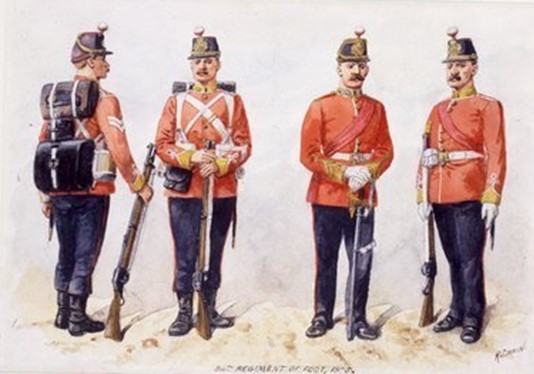The Grenadier Company of the 96th Regiment of Foot which James joined in 1839 in England provided him with military training and discipline.
In the same year he and his Company were sent by sailing ship to New South Wales.
It was no pleasure cruise. The ship was conveying a load of British convicts to the penal colony in the Australia.
The soldiers’ job was to keep order among the convicts. This presumably would have been a daunting task for such a young new recruit as James.
The regiment stayed for some time in Sydney before part of it including James was shipped to Port Nicholson (later renamed Wellington) in New Zealand in 1843.
The regiment joined others, including the 58th, 65th and 99th, which had been brought to New Zealand to subdue Maori in various parts of the North Island.
Maori were fighting back against the forcible taking or purchase of their land.
In the 1840s and again in the 1860s skirmishes between British soldiers and various iwi took place around the Hutt Valley, Porirua, Wanganui, Waikato and in Northland.
According to a family story his Company was sent in 1845 to Kororareka (now called Russell) in the Bay of Islands where it took part in the ‘Flagstaff War’.
It would have been a brutal reminder for James of the task in New Zealand.
The Maori attack took the British soldiers by surprise.
By the time the day was over not only had Hone Heke cut down the flagstaff for the fourth time but the British had been routed.
Twelve of them were killed and 23 wounded.
The regiment returned to Port Nicholson and in 1847 was removed to Tasmania.
This was not good news for James who by this time was married with a young family.
A family story has him jumping off the departing ship in the harbour so that he could stay.
A more likely scenario has him buying his discharge for 15 pounds in Tasmania, and returning to Port Nicholson.

96th regiment

Leave a Reply